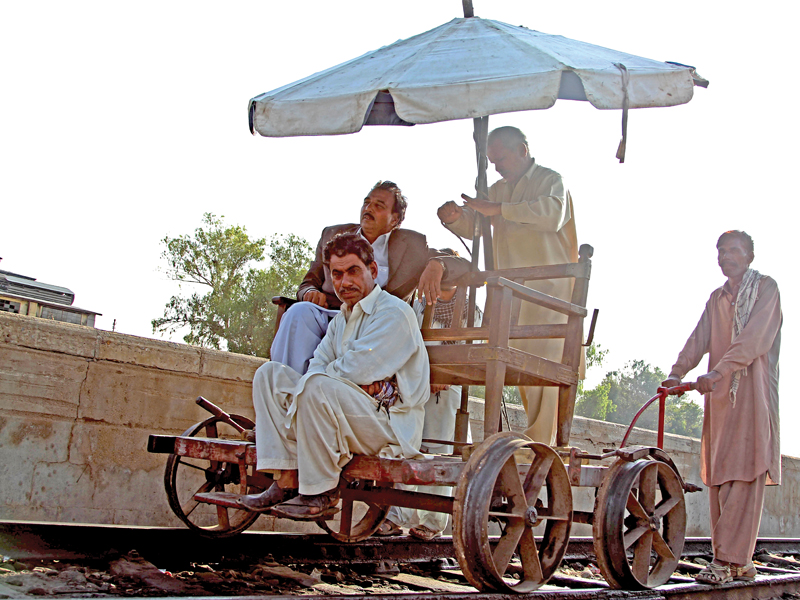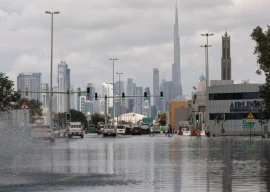
Imagine you are pushing a trolley on the slippery edge of the railway track with a train speeding towards you at 150 kilometres per hour. Would your heart skip a beat? Would you leave the trolley and run to save your own life?
Rahim Bux has not flinched once in the last 33 years at this job. He is the head trolley man at the Karachi Cantt Railway Station and has spent most of his life pushing trolleys along the railway tracks.
Bux was 18 years old when he started working the push-trolley. He is now 54 and has become the head trolley man of the Karachi Cantt Railway Station. Throughout his time in the profession, he claims he has not seen any improvements in the structure of the railways system.
“A total of five men sit on the trolley, including the inspector, when we go out to inspect the railway tracks,” said Bux. “The trolley is pushed by two men at a time on either side of the track for five kilometres.” Meanwhile, the other two sit at the back of the trolley, waiting for their turn to push the cart and keeping an eye out for any oncoming trains.

According to Bux, if there is a train on the track, they are mostly informed about it by the nearest station via their walkie-talkie handsets or mobile phones. “In case we are not informed by the station, the rattle of the train tells us that it is behind us somewhere, and we immediately pull the trolley off the railway track,” he said. “If the two men sitting in the rear seat of the trolley failed to judge the distance of the train, it would definitely crush us along with the cart.” Pushing a trolley along the slippery tracks can be an arduous task and takes years to get used to.
“The track is barely an inch thick,” he said pointing towards the very thin edge of the railway line. “It is difficult to stand on, especially when you are on a railway bridge, with a stream flowing below.”
Bux recalled how a labourer had fallen to his death while repairing the track on bridge 29 in Malir. “He lost his balance and fell into the stream,” he said. Pointing fingers at the government, Bux said that they were not even provided helmets, jackets, shoes or any other protective gear. “The government is kind enough to provide us a red light, attached at the top of our trolley that we use during the night,” he said wryly.
Meanwhile, the assistant wing inspector, Noor Muhammad, claimed it was rather easy to drag a trolley along the railway track. “You just have to give it a push once and it keeps moving for at least two feet.” The slow speed of the push trolley makes it ideal to inspect the track for minor defects.
On the other hand, the divisional executive engineer of the Karachi Railways, Raja Irfan, shrugged off his responsibility by saying that the system of push trolleys was running since last 120 years and no major accident had been witnessed so far. “Why do they [trolley men] need helmets?” he said. “I haven’t seen anyone slipping off the track.”
Irfan does not find pushing a trolley on the railway bridge a big deal. “As the train travels on the railway bridges, so does the push trolley.”
Published in The Express Tribune, January 8th, 2014.



























1713853507-0/MalalaHilary-(2)1713853507-0-270x192.webp)







COMMENTS
Comments are moderated and generally will be posted if they are on-topic and not abusive.
For more information, please see our Comments FAQ